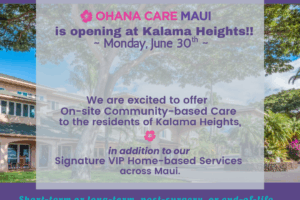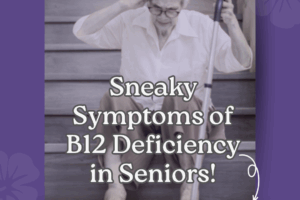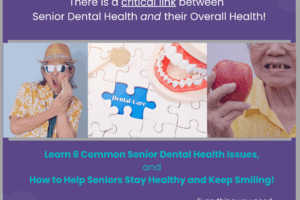What You Need To Know to ‘Age in Place’ Safely

“Nearly 90% of seniors approaching retirement
want to stay in their homes as they age”,
according to a study by the Federal Housing Administration.
What You Need To Know to ‘Age in Place’ Safely
The most popular option for many older adults today is to Age in Place (or, at Home) – and, thanks to advances in technology, it has become a much safer option.
However, technology is not the only answer to Age in Place safely. A combination of Technology & Medical Alerts Devices along with Home Safety Checks & Balances is a great combo to help keep you safe and independent as your health needs change.
Be sure to prepare in advance and make changes before an emergency or a life-changing event occurs! What You Need To Know to Age in Place Safely
Start Here to Improve Personal & Home Safety:
1 – Technology & Medical Alert Devices
2- Home Safety & Fall Prevention
Remember, the areas above can also be combined with Home Care Services which can help older adults live at home longer and more safely. In-home care services can start with simple companionship/chores coverage that can grow into additional help to cover services “all the way to bedbound care and everything in between, including dementia care”.
1- Technology & Medical Alert Devices
Assistive devices, mobile apps, and medical alert systems can work together to keep you connected, safe, healthy, and independent as you age – plus, they are simple and easy to use!
So, what are the benefits?
-
- Get help in an emergency
- Monitor your health and wellness
- Alerts caregivers if something is irregular
- Provides peace of mind
- Stay in touch easily with friends, family, and healthcare providers
- Reduce the risk of falls and injury
Medical Alert Devices: These devices are important if you live alone and can also keep you safe when you’re on the go. Wearable devices can be worn around your neck or wrist and provide 24/7 help at your fingertips.
Just ‘push the button’ and you’ll be connected to a call center with trained operators. Some medical alert systems have additional features like fall detection, companion apps, activity monitoring, and caregiver integrations.
Check out this ‘starter’ list of devices:
-
- Premium Features: Medical Guardian
- Best Price: Bay Alarm Medical
- Best All-around: Mobile Help
- All-in-One Device: Medical Alert
Cell Phones & Tablets for older Adults: 91% of older adults own a cell phone and over 50% use a smartphone. From simple flip phones to the newest smartphones, they help you stay connected with friends and family, and emergency help is at your fingertips.
-
- Some phones, like the GreatCall Jitterbug and come with built-in emergency networks and GPS tracking.
- Tablets for older adults include: Samsung, Apple, Lenovo and GrandPad
Smart Home Devices: Provide a layer of security, convenience and peace of mind – from Smart Speakers to Smart Sensors and Video Doorbells, these devices can be paired to your smartphone. They are so convenient and can be programmed to tell you the weather, give audio reminders, make calls, send texts for you, play music, play games, and so much more!
Check out these options:
-
- Smart Speakers from Amazon Alexa and Google Assist.
- Smart Sensors like Nest, Aloe Care Health & Abode and
- Video Doorbells like Google Nest and Ring.
GPS Tracking Devices: These are quite helpful for those who have dementia and can be worn in so many ways – on a belt, as a watch, a bracelet, keychain or even inside your shoe!
Check out these options:
-
- Dementia Tracking Watches: Galaxy Watch 4 and Apple Watch SE
- PocketFinder: It’s similar to a keyless entry remote control for a car that fits easily on a key chain or in your pocket and it’s waterproof!
- Perimeter Alarm System: Project Lifesaver creates a safety zone using a simple handheld receiver.
2- Home Safety & Fall Prevention Checklists
“ …more than one-third of adults ages 65 years and older fall each year.
Among older adults, falls are the leading cause of injury-related deaths”,
according to the Centers for Disease Control and Prevention
As we age, our ability to move around safely at home and perform everyday activities changes. Falls and related injuries can cause serious challenges for the quality of our lives.
Review the Checklists below and make sure your home is prepared to keep you as safe as possible for years to come!
Home Safety & Fall Prevention
-
- Clear pathways and open space in the home
- Good lighting and night-lights are essential
- Use non-glare 100-watt or greater bulbs
- Install non-skid liners on stairs
- Install handrails on stairs & long pathways
- Install ramps where needed
- Flatten thresholds as needed
- Remove or tack down all scatter rugs
- Avoid using slippery wax on floors
- Keep a fire extinguisher, smoke detector, & carbon-monoxide detector on every floor
- Use door locks that can be opened from both sides
- Clear the garage and driveway of debris, fix cracks and remove rocks or roots
- Outdoor walkways- Install bright lighting or use automatic sensors
- Order a walking aid, correctly measured for them when needed
Bathroom Safety
-
- Leave a light on at night
- Good lighting and night-lights are a must
- Install grab bars & toilet seats with handrails
- Place non-skid mats in bath and shower
- Use a bathmat with a non-slip bottom
- Avoid scalds – Turn the water heater to 120°F
- Mark cold and hot faucets clearly
- Use door locks that can be opened from both sides
- Bathe when help is available
Kitchen Safety
-
- Keep floors clean and uncluttered
- Use non-glare 100-watt bulbs or higher
- Mark “on” and “off” positions on appliances clearly and with bright colors.
- Use appliances with auto-shutoff features if needed
- Store sharp knives in a rack
- Use a kettle with an automatic shut-off
- Make sure food is rotated regularly and check expiration dates
- Store heavier objects at waist level
- Store hazardous items separate from food items
Drug Safety
-
- Keep medications in an easy-open dispenser
- Clearly label all medication
- Review medicines frequently with your doctor or pharmacist
- Dispose of any old or used medications
Need Some Additional Help?
Ohana Care Maui performs a thorough Home Safety Assessment and Walk-through and makes important recommendations for your loved one’s continued safety as a part of our In-Home Care Services. From Companionship and Respite Care, all the way to Bedbound Care & Everything in Between. We Do It All.
More Info — What You Need To Know to ‘Age in Place’ Safely:
Maui County Office on Aging at: mauicountyadrc.org, or
Reach out to Ohana Care Maui or call (808) 344-1285.
Ohana Care Maui Exceptional Care You Can Count On.
Call Today for a Free In-Home Care Consultation
From respite care to bedbound care and everything in between — including Dementia & Alzheimer’s.
24/7, Island-wide Services / Hawaii Licensed Home Care Agency
808-344-1285
OhanaCareMaui.com







